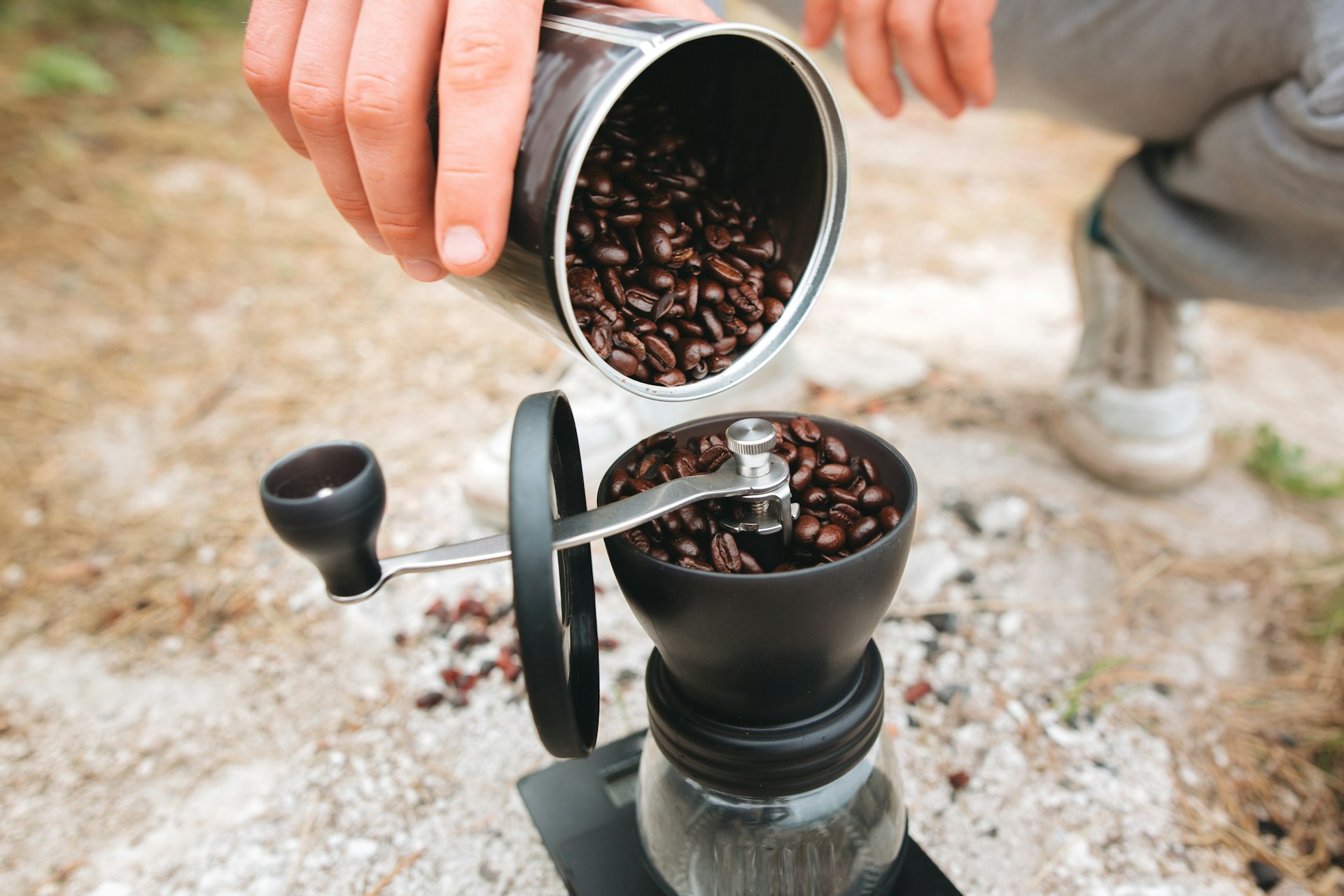When your cup of coffee tastes sour one day and overly bitter the next, the problem may not be your beans or your machine. It could be uneven extraction. Coffee extraction is the process of pulling soluble flavor compounds from the grounds during brewing. When that process happens unevenly, your cup ends up tasting off, either too sharp, too flat, or just not quite right.
Getting even extraction is the key to unlocking the full flavor of your coffee. That deep, sweet balance you want in every sip is only possible when water flows equally through the bed of coffee grounds. But if the grind is off or the tamp is uneven, the water won’t saturate everything the same way. In this article, we’ll cover what contributes to uneven extraction and how to correct those issues so every brew you make hits the mark.
Understanding the Importance of Even Extraction
Think of extraction like steeping a teabag. If part of the bag sits dry or gets over-soaked, the tea won’t brew evenly. The same thing happens with coffee. When water hits all parts of the coffee grounds evenly, you get rich and balanced flavors. But when some bits of the coffee don’t brew properly, you end up with a disappointing cup.
Even extraction brings out sweetness, body, and clarity. It makes your coffee taste smoother and helps avoid two extremes: too sour from under-extraction or too bitter from over-extraction. Uneven extraction causes both effects in the same cup at the same time, creating a confusing mix of flavors.
The way your coffee is ground, packed, and exposed to water affects how evenly everything extracts. Brew methods that use pressure, like espresso, tend to be more sensitive to these variables. But even drip and pour-over styles can suffer if things are out of balance. Understanding how each step connects is the first move toward a more consistent, enjoyable coffee experience at home.
Common Causes of Uneven Extraction
If your coffee has been hit or miss and you’ve already checked things like bean freshness or water quality, uneven extraction could be the issue. Let’s go over some common reasons it happens.
1. Inconsistent Grind Size
Grind size is one of the biggest factors in even extraction. If your grinder is creating both fine particles and large chunks, water won’t flow evenly through the grounds. Finer parts can slow down water and cause over-extraction, while coarse chunks let it zip through too fast and under-extract. A uniform grind helps all the coffee brew at the same pace.
2. Uneven Tamp Pressure
For espresso, tamping compresses the coffee to keep water from finding weak spots to rush through. If you apply more pressure on one side or don’t tamp firmly enough, water will take the easiest path. That leads to uneven flow and partial brewing. The goal is flat, even compression so water spreads out correctly.
3. Incorrect Water Temperature
Temperature plays a big role in extraction. If the water is too hot, it can scorch the coffee. If it’s too cold, it won’t pull enough flavor out. This balance is critical. Even with the right grind and tamp, using the wrong water temperature weakens the overall taste.
4. Uneven Coffee Bed Distribution
Before you start a brew or pull a shot, check that the coffee bed is level. A mound or dip causes water to pool in one area or rush away from another. That means some grounds over-extract while others barely brew at all. A flat surface gives the water an even path.
These issues don’t mean you need to buy expensive gear. Often, careful adjustments in how you prepare and brew go a long way.
Solutions to Fix Uneven Extraction
Once you understand what’s going wrong, it becomes easier to make small but powerful changes. These tweaks can improve your brew without a full equipment overhaul.
– Use a Quality Grinder
Blade grinders chop beans unevenly, producing a mix of dust and chunks. That messes with extraction. Burr grinders, on the other hand, crush beans in a consistent way. They cost more but give you a reliable grind size. Upgrading your grinder is one of the most effective ways to improve your brew.
– Aim for Proper Tamping
If you’re pulling espresso shots, even tamping makes a huge difference. Apply firm, steady pressure and make sure the puck is flat across the top. Avoid tilting or pressing harder on one side. Water will always pick the fastest route, so tamping evenly keeps flavor extraction consistent.
– Hit the Right Temperature Range
Coffee brews best between 195°F and 205°F. Water above 205°F risks burning the grounds, while below 195°F won’t extract enough flavor. If you can’t set the temperature on your machine, let freshly boiled water sit for 30 seconds before you pour. Making this minor change can have a big effect on flavor balance.
– Evenly Distribute the Coffee Bed
Before brewing, shake or gently tap your portafilter or filter basket to help the grounds settle level. In a pour-over, gently swirl or tap the brewer to even out the top. For espresso, you can use a distribution tool or simply use your finger in a spiral motion. This helps water move evenly through all the coffee.
Trying these fixes can make things clearer and smoother in your cup. They’re even more effective when paired with high-quality, fresh roasted beans.
Enhancing Fresh Flavors With Fresh Roasted Coffee Beans
Even the best brew technique won’t shine if you’re starting with stale beans. Beans lose aroma and flavor as they age. If they’ve been sitting for weeks before you brew them, your coffee will struggle to have depth or clarity.
Fresh roasted coffee beans help bring out flavors you might miss otherwise. These beans retain oils, sweetness, and complexity that older beans simply don’t have anymore. Instead of tasting dull or sour, your cup may surprise you with smooth chocolate tones or bright fruity notes, depending on the origin. In places like Lafayette, where humidity runs high most of the year, older beans tend to fade faster, making freshness even more important.
You don’t need to be a coffee expert to notice the difference. If you’ve ever added sugar or cream just to make your coffee drinkable, try brewing fresh roasted beans with the tips above. You might discover it tastes great on its own, just the way it is.
Coffee is a lot like cooking—fresh ingredients matter. Swapping out stale beans for something fresher can completely change how your coffee tastes and how you feel about making it.
Brewing Excellence With Jet Coffee
Good coffee comes from doing a few things right. Finding the right grind size, tamping evenly, checking your water temperature, and leveling the coffee bed all play a role. These parts work together to help you avoid the ups and downs of uneven extraction.
Fresh roasted coffee beans make these steps even more rewarding. At Jet Coffee, we roast premium-quality beans and deliver them quickly so you get to brew with ingredients that bring out the best in every cup. Whether you’re building your home setup or just looking to make breakfast coffee smoother and brighter, starting fresh makes a big difference.
Don’t get discouraged by off-tasting brews. Tweaking your method and using fresh beans can give you reliable results that taste just right every time.
Perfecting Your Brew With Fresh Roasted Beans
Better coffee starts with knowing what went wrong and what to adjust. Once you understand how uneven extraction happens, you’re one step closer to fixing it. With a little practice and a few swaps—like a more consistent grinder or fresh roasted coffee beans—you’ll notice your coffee changing for the better.
Taste, after all, is personal. Finding what works with your habits and your gear is part of the fun. And when everything lines up, you get more than just a caffeine boost—you get a cup worth savoring from the first sip to the last drop.
Brewing the perfect cup of coffee is an art that thrives on attention to detail and high-quality ingredients. For those looking to enhance the depth and clarity of their coffee, experimenting with fresh roasted coffee beans could be the key. At Jet Coffee, we pride ourselves on delivering the rich and vibrant flavors you love, right to your kitchen.



